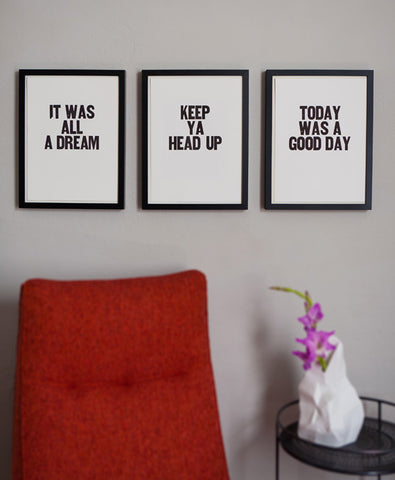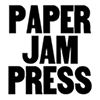[Arianna Orland] I’ve never had a studio of my very own. Sure, I have a desk at home and a computer. Yes, I have an office where I go to my day job. And like a lot of people, I work where I am, whether I’m sitting at a coffee shop, in an airplane or firing off an e-mail as I walk down the street. But most of my personal artistic pursuits have required something bigger: an enlarger, a bandsaw, a guillotine, a Vandercook, an orca. Machines epic in name, size and scale that demand square footage and inspire me to print, trim and cut paper. Because of this need to seek out a place to work, I’ve found myself in some unusual circumstances.

As a photographer, I needed a dark room. That led me to a community space in the heart of the San Fernando Valley that served as a rec room for a senior citizen program, where I met some fascinating — and much older — friends. When I made large-scale interactive installations, I needed a wood shop. That led led me to a collaborative workspace in Brooklyn called 3rd Ward, which was under construction at the time. I found myself jockeying for a spot in the single available power outlet in the dead of summer with no ventilation. My love of letterpress led me to the San Francisco Center for the Book, because I needed a Vandercook.

I started printing letterpress posters about four years ago. Feeling depleted from being a graphic designer who spent most of her time focused on client work in the interactive space, I was looking for a way to get back to the roots of my craft, to touch paper again and move my focus away from the screen.

I’ve worked in at least 10 collaborative spaces over the years. With no place to call my own, I’ve had to seek out the company of others, make do with the banged-up equipment available, and see the possibilities in what’s at my disposal … rather than all the trappings of the perfect tools or space, we sometimes think we need to be truly creative. There’s something about going to a collaborative studio that offers a sense of community — even when working by oneself — that staring at a glowing rectangle can’t match.

Now I’m back at the Center for the Book working on a brand new edition for Paper Jam. [Like its companion products, the new edition will be available in Felt & Wire Shop.] The Center is a lovely place in the Potrero Hill neighborhood of San Francisco. There are four Vandercooks, board sheers from the 1800s, a manual guillotine and all the type, reglets and furniture a girl could ask for. They have open press night a couple times a month when they rent presses by the hour. I book time whenever I can. I usually go after a full day’s work and print late into the night.
I use the same drawer of wood type, the Hamilton Gothic 10 line. That’s my font. I love the silkiness of the wood and the straightforward and simple quality of the letterforms. I also love that the drawer has no K‘s or I‘s. I had to buy those letters on eBay, and on the posters that use those letters, they don’t quite match. I’m OK with that.

A couple months ago at the Center, I was lucky enough to meet Jen Pham-Corbett from Farewell Paperie … turns out she was the print monitor on duty. Check out her work via the link — so beautiful! When I rented a desk in Brooklyn a couple years ago, the woman sitting next to me turned out to be Swiss Miss, design blogger extraordinaire! We are all so lucky to have Tina’s amazing blog to gobble up everyday. Thank you, Tina. I’m really excited to announce an upcoming poster collaboration with her. Stay tuned for details.

I guess I view the term “studio” loosely; it’s more a state of mind I achieve when I stop thinking and am totally immersed in the act of creating. My studio set up is atypical as compared with some of the other artists featured on Felt & Wire, but I think it’s fairly typical for a lot of readers. Basically, you can make work anywhere. I do. I hope you do, too. Go out and make things. Start now.

This article was written by Alyson Kuhn and originally appeared on Mohawk’s Felt and Wire blog in August of 2011.






